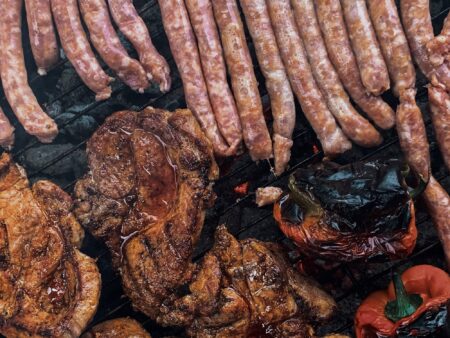The World Economic Forum predicts that by 2050 plastic waste in the oceans will outweigh the fish. This is a huge problem for marine life as a myriad of animals either get tangled up in plastic waste or else mistake it for food and ingest it.
Fortunately, more and more people are waking up to the issue. Since a lot of this plastic waste comes from food packaging, many people are doing their best to limit their use of it. While that intention is admirable, we may need to look at the issue from another perspective.
People tend to think that many companies have shifted to using more plastic packaging just because it’s cheaper. It is cheaper, but there are other good reasons we have started relying more and more on plastic packaging. Plastic is durable and provides protection from contaminants and the elements. It reduces food waste by preserving food and increasing its shelf life. It protects food against pests, microbes and humidity.
Without this protection, food is more likely to get damaged and become unusable. Since food waste contributes to climate change, water and energy consumption, deforestation and biodiversity loss, every effort we make to mitigate those effects makes a big difference, and plastic packaging helps make that possible.
In addition, plastic can easily be made thin and lightweight, which lowers emissions, since it doesn’t appreciably add volume or mass to transport. In other words, the overall environmental impact of plastic is lower than that of alternative materials, like bulky cardboard and weighty metal. Since plastic can be designed to be durable without becoming heavy, you don’t have to transport a lot of extra mass and volume. That means you can reduce fuel consumption, which saves money and lowers emissions that are harmful to the environment.
In 2017, Denkstatt, a sustainability consultancy, published a study called “How Packaging Contributes to Food Waste Prevention.” According to its findings, “Even if improved packaging solutions contribute to increased CO2 emissions, the CO2 savings from reduced food waste are in most cases much higher.” The study assumed that none of the packaging would be recycled, but if it were, then the carbon dioxide reduction would be even greater.
What are the sources of marine plastic pollution and how can we reduce them?

Plastic enters the ocean via many different routes. Proper disposal of plastic items (especially recycling, when possible) is clearly the key to keeping it out of the ocean. Although consumers in industrialized countries produce the most plastic waste, developing countries are the source of most of the plastic waste that ends up in the oceans. The best way to help the environment is to improve recycling and waste management throughout the world, particularly in countries where existing infrastructure is lacking.
Overall, plastic packaging is a better alternative for the environment than glass, metal or other packaging alternatives, but even so, some systems are better than others. In an effort to create the most environmentally friendly packaging solution, Swedish inventor Rickard Gillblad invented the Torus Pak. This patented packaging system was designed to reduce food waste by enabling mass produced, pre-portioned frozen ready meals to be packaged in such a way that doesn’t prevent a plated meal presentation.
By now, many people know that frozen meals radically reduce food waste by increasing shelf life and limiting plate waste through pre-portioning. Since the Torus Pak is designed to have the film removed from underneath the meal and the package lifted away, there is no need to eat out of the container or scrape the meal out.
In an effort to select the material with the least environmental impact, the Torus Pak engineering team evaluated different options for the optimum plastic polymer to use in their packaging system. In a study of 12 different polymers, polypropylene ranked #1 in life cycle analysis, which is a tool to compare the environmental impact of packaging production, use and disposal. Thus polypropylene was selected for the Torus Pak.
In an age where threats to the environment are widespread, it is important for individuals and industries alike to make an effort to minimize the negative environmental impacts of their activities. Plastic food packaging reduces food waste and lowers carbon emissions, both of which contribute to a reduction in global warming. The key is to create packaging that more environmentally friendly and then dispose of that packaging in environmentally friendly manners.
Did you like it? 4.4/5 (30)








